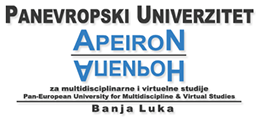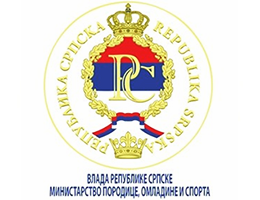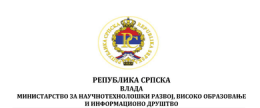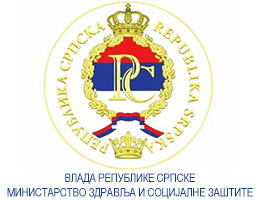Relations of Basic and Specific Motor Abilities With the Results Of Breaststroke Swimming Technique in Young Swimmers
Volume 2, Issue 1 (2012)
Volume 2, Issue 1 (2012)
Relations of Basic and Specific Motor Abilities With the Results Of Breaststroke Swimming Technique in Young Swimmers
Abstract:
The aim of the training process in swimming is to development those anthropological characteristics and abilities of which the result strongly depends on. The aim of this study is to determine the effect of certain basic motor abilities and specific motor skills on the results in 100m breaststroke, among young swimmers. The sample consisted of 30 swimmers aged from 9 to 12 years belonging to the category of young pioneers. Predictor set consisted of 8 variables for evaluation of basic and 6 for evaluation of specific motor skills. Criterion variable was the result of 100m breaststroke. Results of regression analysis showed that both whole sets of observed variables have significant correlation with the results in the 100m breaststroke. Observed individually no variable has statistically significant influence. The resulting data indicate that training process with the younger categories must create the optimum conditions for the development of motor abilities that may affect the efficiency of the breaststroke technique.
Keywords:
motor abilities, influence, breaststroke, swimmers
Full Text:
References:
- Ahmetović, Z. (1994). O treningu plivača. Novi Sad: Zavod za fizičku kulturu Vojvodine.
- Costill, D.L., Maglischo E.W., & Richardson, A.B. (1992). Swimming. Oxford: Blackwell Science Ltd.
- Dopsaj, M. & Bratuša, Z. (2003). Matematički model za procenu nivoa generalne plivačke pripremljenosti vaterpolista mlađeg uzrasta od 12 do 14 godina. Nova sportska praksa, (1-2), 47-55.
- Jorgić, B., Okičić, T., Stanković, R., Dopsaj, M., Madić, D., & Vassilios Thanopoulos (2011). Parameters of situational motor skills of Serbian swimmers and their influence on swimming results, Facta Universitatis, Series Physical Education and Sport, 9 (2), 183-191.
- Jurimae, J., Halljaste, K., Cicchela, A., Latt, E., Purge, P., Leppik, A., & Jurimae, T. (2007). Analysis Of Swimming Performance From Physical, Physiological, And Biomechanical Parameters In Young Swimmers. Pediatric Exercise Science, (19), 70-81.
- Latt, E., Jurimae, J., Maestu, J., Purge, P., Ramson, R., Haljaste, K., Keskinen, K.L., Rodriguez, F.A. & Jurimae, T. (2010). Physiological, biomechanical and anthropometrical predictors of sprint swimming performance in adolescent swimmers. Journal of Sports Science and Medicine, (9), 398-404.
- Leko, G. (2001). Definiranje odnosa motoričkih sposobnosti i antropometrijskih karakteristika plivača. Doktorska disertacija. Zagreb: Fakultet za fizičku kulturu.
- Lokken, B. (1998). Swiming Fitness Testing. Exercise Physiology, 652, 2-8.
- Madić, D., Okičić, T., & Aleksandrović, M. (2007). Plivanje. Niš: FSFV u Nišu.
- Maglischo, E. W. (2003). Swimming fastest. Champaign: Human Kinetics.
- Malacko, J. (1991). Osnove sportskog treninga. Novi Sad: FTN.
- Malacko, J., & Rađo, I. (2004). Tehnologija sporta i sportskog treniniga. Sarajevo: Fakultet sporta i tjelesnog odgoja.
- Metikoš, D., Prot, F., Hofman, E., Pintar, Ž.,& Oreb, G. (1989). Mjerenje bazičnih motoričkih dimenzija sportaša. Zagreb: Fakultet za fizičku kulturu.
- Okičić, T. (1996). Uticaj fleksibilnosti na rezultate u plivanju. U N. Živanović (Ur.), Zbornik radova šestog nacionalnog naučnog skupa sa međunarodnim učešćem „FIS komunikacije 1995“, (pp. 202-204). Niš: Filozofski fakultet - Serija Fizička kultura.
- Okičić, T. (1999). Uticaj treninga plivanja na brzinu kao i na promene nekih dimenzija antropoloških karakteristika plivača mlađih kategorija. Magistarski rad. Niš: Fakultet fizičke kulture.
- Okičić, T., Ahmetović, Z., Madić, D., Dopsaj, M., & Aleksandrović, M. (2007). Plivanje-praktikum. Niš: SIA.
- Seifert, L., Toussaint, H.M., Alberty, M., Schnitzler, C., & Chollet, D. (2010). Arm coordination, power, and swim efficiency in national and regional front crawl swimmers. Human Movement Science, 29 (3), 426-439.
- Sidney, M., Alberty, M., Leblanc, H., & Chollet D. (2011) Stroking parameters during competition. In S. Ludovic, C. Didier, & M. Inigo, World book of swimming: From science to performance (pp.443-458). New York:Nova Science Publishers, Inc.
- Stoiljković, S. (2003). Osnove opšte antropomotorike. Niš: SKC-Niš.
- Šoše, H., & Rađo, I. (1998). Mjerenje u kineziologiji. Sarajevo: Fakultet za fizičku kulturu.
- Takagy, H., Sugimoto, S., Nishijima, N., & Wilson, B. (2004). Differences in stroke phases, arm-leg coordination and velocity fluctuation due to event, gender and performance level in breaststroke. Sports Biomechanics, 3(1), 15-27.
- Zahorjević, A. (1990). Uticaj motoričke sposobnosti na brzinu plivanja dečaka i devojčica polaznika pionirskih sportskih škola, Zbornik radova nastavnika i saradnika FFK, sveska V. Novi Sad: Univerzitet u Novom Sadu.






